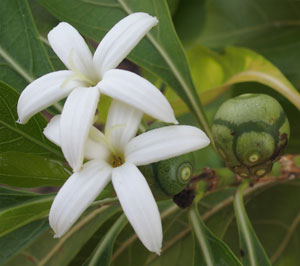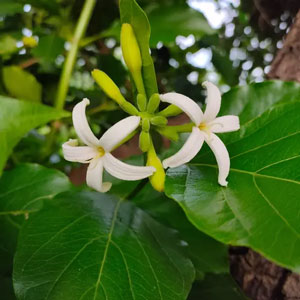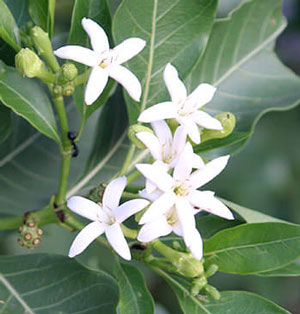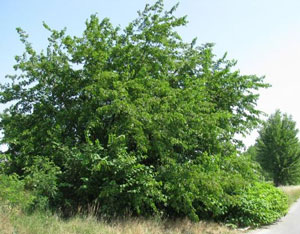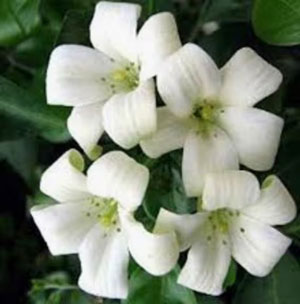Morinda citrifolia | Beach & Indian Mulberry | Cheese Fruit | Noni




Morinda citrifolia | Beach & Indian Mulberry | Cheese Fruit | Noni
30 Available Now
These seeds were collected from Morinda citrifolia, also known as Beach Mulberry, Cheese Fruit, Hog Apple, Indian Mulberry, and Noni. This tree likes to live in sun to partial shade where it can grow up to 30 feet high. The beautiful white flowers are fragrant and bloom repeatedly through the year where they attract a wide variety of bees, birds, and butterflies. In some areas this is a famine food but in other places it is a staple food. The fruit is used to make beverages and is also cooked into dishes such as curries. Young leaves and shoots can be cooked and eaten as vegetables or they can be eaten raw. The seeds can also be roasted and eaten. The bark from the root can be used to make a red dye. USDA Hardiness Zones 11 to 12.
Moringa oleifera | Horseradish Tree | Ben Oil Tree | Benzoil Tree | Drumstick Tree
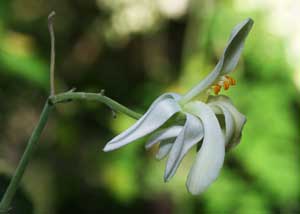




Moringa oleifera | Horseradish Tree | Ben Oil Tree | Benzoil Tree | Drumstick Tree
35 Available Now
This is Moringa oleifera, also known as Moringa, Drumstick Tree, Horseradish Tree, Ben Oil Tree, and Benzoil Tree. These wonderful fragrant flowers bloom from late Spring until early Summer. This tree likes to live in the full sun where it can grow to about 40 feet high at most. The young seed pods and the leaves are used as vegetables. Surprisingly this fast growing tree can be grown as an annual and the seed pods in the first year are edible while the seed pods in the second year are bitter and inedible. Oil can be obtained from the seeds. This oil is used as a food product, in cosmetics, and for hair and skin. It has edible roots, seeds, flowers, and pods. It is rich in potassium, iron, calcium, vitamin C, and vitamin A. The leaves can be eaten fresh or cooked and contains 18 amino acids including the 9 essential amino acids. The roots taste a little bit like horseradish, hence the name horseradish tree. This plant is amazingly drought resistant. USDA Hardiness Zones 9 to 11.
Moringa oleifera ODC




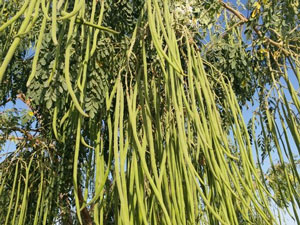
Moringa oleifera ODC
4 Available Now
These seeds were collected from Moringa oleifera ODC. This is a superfood. The ODC variety was selected for six generations, and produces tasty and fleshy fruit. The drumsticks are about two and a half feet long. These wonderful fragrant flowers bloom from late Spring until early Summer. This tree likes to live in the full sun where it can grow to about 10 feet high at most. The young seed pods and the leaves are used as vegetables. Surprisingly this fast growing tree can be grown as an annual and the seed pods in the first year are edible while the seed pods in the second year are bitter and inedible. Oil can be obtained from the seeds. This oil is used as a food product, in cosmetics, and for hair and skin. It has edible roots, seeds, flowers, and pods. It is rich in potassium, iron, calcium, vitamin C, and vitamin A. The leaves can be eaten fresh or cooked and contains 18 amino acids including the 9 essential amino acids. The roots taste a little bit like horseradish, hence the name horseradish tree. This plant is amazingly drought resistant. USDA Hardiness Zones 8 to 11.
Moringa oleifera Perennial Karnataka
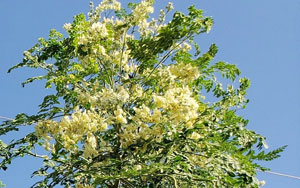
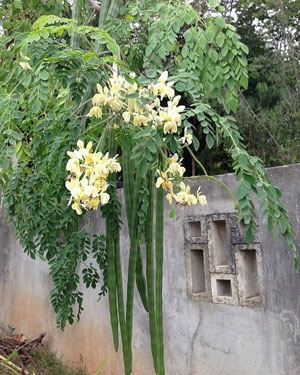



Moringa oleifera Perennial Karnataka
7 Available Now
These seeds were collected from Moringa oleifera Perennial Karnata. Compared to spinach, moringa leaves contain 100 times more calcium and 30 times more iron. These wonderful fragrant flowers bloom from late Spring until early Summer. This tree likes to live in the full sun where it can grow to about 40 feet high at most. The young seed pods and the leaves are used as vegetables. Surprisingly this fast growing tree can be grown as an annual and the seed pods in the first year are edible while the seed pods in the second year are bitter and inedible. Oil can be obtained from the seeds. This oil is used as a food product, in cosmetics, and for hair and skin. It has edible roots, seeds, flowers, and pods. It is rich in potassium, iron, calcium, vitamin C, and vitamin A. The leaves can be eaten fresh or cooked and contains 18 amino acids including the 9 essential amino acids. The roots taste a little bit like horseradish, hence the name horseradish tree. This plant is amazingly drought resistant. USDA Hardiness Zones 9 to 11.
Moringa oleifera PKM1 | Drumstick & Horseradish & Benzoil Tree





Moringa oleifera PKM1 | Drumstick & Horseradish & Benzoil Tree
19 Available Now
These seeds are for Moringa oleifera PKM1, also known as Drumstick Tree, Horseradish Tree, and Benzoil Tree. This is Moringa oleifera, also known as Moringa, Drumstick Tree, Horseradish Tree, Ben Oil Tree, and Benzoil Tree. The PKM1 hybrid is used to grow superior fruit and produce mare oil. These wonderful fragrant flowers bloom from late Spring until early Summer. This tree likes to live in the full sun where it can grow to about 40 feet high at most. The young seed pods and the leaves are used as vegetables. Surprisingly this fast growing tree can be grown as an annual and the seed pods in the first year are edible while the seed pods in the second year are bitter and inedible. Oil can be obtained from the seeds. This oil is used as a food product, in cosmetics, and for hair and skin. It has edible roots, seeds, flowers, and pods. It is rich in potassium, iron, calcium, vitamin C, and vitamin A. The leaves can be eaten fresh or cooked and contains 18 amino acids including the 9 essential amino acids. The roots taste a little bit like horseradish, hence the name horseradish tree. This plant is amazingly drought resistant. These pods are great for cooking. They are the most delicious of the moringa. USDA Hardiness Zones 9 to 11.
Moringa oleifera PKM2





Moringa oleifera PKM2
100 Available Now
This is Moringa oleifera, also known as Moringa, Drumstick Tree, Horseradish Tree, Ben Oil Tree, and Benzoil Tree. These wonderful fragrant flowers bloom from late Spring until early Summer. This tree likes to live in the full sun where it can grow to about 40 feet high at most. The young seed pods and the leaves are used as vegetables. Surprisingly this fast growing tree can be grown as an annual and the seed pods in the first year are edible while the seed pods in the second year are bitter and inedible. Oil can be obtained from the seeds. This oil is used as a food product, in cosmetics, and for hair and skin. It has edible roots, seeds, flowers, and pods. It is rich in potassium, iron, calcium, vitamin C, and vitamin A. The leaves can be eaten fresh or cooked and contains 18 amino acids including the 9 essential amino acids. The roots taste a little bit like horseradish, hence the name horseradish tree. This plant is amazingly drought resistant. PKM-2 is an improvement over PKM-1. PKM-2 improves lateral branching which is desirable when harvesting and has more flesh than seeds. The new variety PKM-2 produces 50 inch long pods which are about 3 inches thick. These pods are great for cooking. They are the most delicious of the moringa. USDA Hardiness Zones 9 to 11.
 Buy Rare Seeds
Buy Rare Seeds



